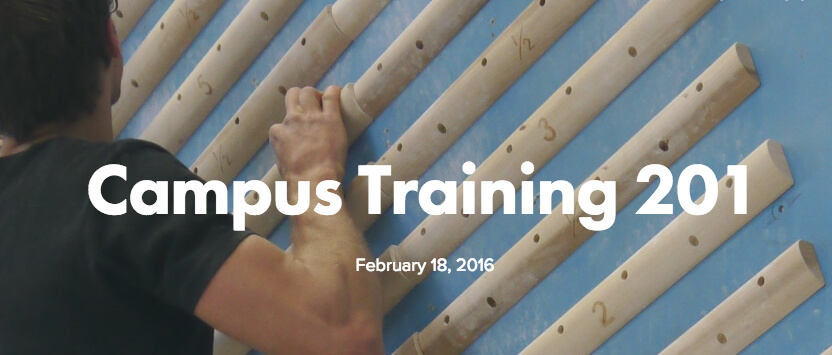In his Campus Training 101 Article, climbing trainer and coach Will Anglin outlines the basic principles behind how campus training works, lays out a check list for campus board readiness, and describes some basic workouts to get you started. If you have not read this first article and/or are new to this type of training, start by reading the previous article first.
However, Will recently wrote a Campus Training 201 article in which he expands on his first article by taking you deeper into the science behind how campusing improves your power and describing some more advanced (and potentially more dangerous) exercises to help you take your campusing to the next level.
In detail, Will describes the stretch shorting cycle (SSC) and how using this sports science knowledge can greatly increase the effectiveness of plyometric training like campusing.
“In climbing one of the ways we take advantage of the SSC is through the use of countermovements. A countermovement is a relatively small movement in the opposite direction of the target hold in order to build tension in the muscle for the move in the desired direction. Another way to describe it is the “wind-up” before going for a move. When a climbers sinks down before a dyno, this is a countermovement. The same thing happens in a more subtle way when a climber rears their head and shoulders backwards before initiating a powerful dead-point. On the campus board, many climbers naturally use countermovements by sinking down before launching to the next rung. These countermovements make up the stretch phase of the SSC.”
“More advanced campus training exercises exploit the SSC by creating more forceful countermovements than the typical “wind-up” motion. To create these forceful countermovements, the climber will down-campus or “drop” into position before initiating a concentric contraction.” – Will Anglin
After explaining the science behind the SSC and how it applies to climbing, Will then discusses three drills on the campus board that will take advantage of the SSC through the use of countermovements.
- Double Clutches
- Down-Up Repeaters
- Small Rung Double Clutches
Just as in his 101 article, Will describes how to do these drills in detail, but is also careful to remind you that while these exercises can be extremely effective in increasing your power, they are also dangerous and can quickly lead to injury if done incorrectly or too frequently.
Click through bellow to read the complete article and remember to train hard, but also train safe.
Click Here: Campus Training 201 with Will Anglin
(photo courtesy of willanglin.squarespace.com)
Other Articles You Might Like:
- Campus Training with Will Anglin
- Fingerboard and Campus Board for Beginners
- Campusing, Part 3: Plyometrics
- Power Training Video with Louis Parkinson






Leave A Comment